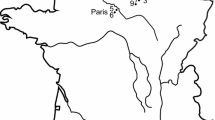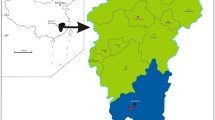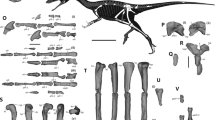Abstract
Recent fossil discoveries have substantially reduced the morphological gap between non-avian and avian dinosaurs, yet avians including Archaeopteryx differ from non-avian theropods in their limb proportions. In particular, avians have proportionally longer and more robust forelimbs that are capable of supporting a large aerodynamic surface. Here we report on a new maniraptoran dinosaur, Anchiornis huxleyi gen. et sp. nov., based on a specimen collected from lacustrine deposits of uncertain age in western Liaoning, China. With an estimated mass of 110 grams, Anchiornis is the smallest known non-avian theropod dinosaur. It exhibits some wrist features indicative of high mobility, presaging the wing-folding mechanisms seen in more derived birds and suggesting rapid evolution of the carpus. Otherwise, Anchiornis is intermediate in general morphology between non-avian and avian dinosaurs, particularly with regard to relative forelimb length and thickness, and represents a transitional step toward the avian condition. In contrast with some recent comprehensive phylogenetic analyses, our phylogenetic analysis incorporates subtle morphological variations and recovers a conventional result supporting the monophyly of Avialae.
Similar content being viewed by others
References
Chinsamy-Turan A. The Microstructure of Dinosaur Bone. Baltimore and London: The Johns Hopkins University Press, 2005. 1–195
Chinsamy-Turan A. Histological perspectives on growth in the birds Struthio camelus and Sagittarius serpentarius. In: Third Symposium of the Society of Avian Paleontology and Evolution. Senckenberg, Germany: Courier Forschungsinstitut Senckenberg, 1995. 317–323
Xu X, Zhou Z H, Wang X L. The smallest known non-avian theropod dinosaur. Nature, 2000, 408: 705–708
Turner A H, Pol D, Clarke J A, et al. A basal dromaeosaurid and size evolution preceding avian flight. Science, 2007, 317: 1378–1381
Sereno P C. The evolution of dinosaurs. Science, 1999, 284: 2137–2147
Xu X. Deinonychosaurian fossils from the Jehol Group of western Liaoning and the coelurosaurian evolution. Dissertation for the Doctoral Degree. Beijing: Chinese Academy of Sciences, 2002. 322
Norell M A, Clark J M, Makovicky P J. Phylogenetic relationships among coelurosaurian dinosaurs. In: Gauthier J, Gall L F, eds. New Perspectives on the Origin and Evolution of Birds. New Haven: Yale University Press, 2001. 49–67
Makovicky P J, Norell M A. Troodontidae. In: Weishampel D B, Dodson P, Osmolska H, eds. The Dinosauria, 2nd ed. Berkeley: University of California Press, 2004. 184–195
Elzanowski A. Archaeopterygoidae. In: Chiappe L M, Witmer L M, eds. Mesozoic Birds: Above the Heads of Dinosaurs. Berkeley: University of California Press, 2002. 129–159
Makovicky P J, Apesteguía S, Agnolín F L. The earliest dro-maeosaurid theropod from South America. Nature, 2005, 437: 1007–1011
Chiappe L M, Ji S A, Ji Q, et al. Anatomy and systematics of the Confuciusornithidae (Theropoda: Aves) from the late Mesozoic of Northeastern China. Bull Amer Mus Nat Hist, 1999, 242: 1–89
Zhou Z H, Zhang F C. Anatomy of the primitive bird Sapeornis chaoyangensis from the Early Cretaceous of Liaoning, China. Can J Earth Sci, 2003, 40: 731–747
Christiansen P, Bonde N. Limb proportions and avian terrestrial locomotion. J Ornithol, 2002, 143: 356–371
Forster C A, Sampson S D, Chiappe L M, et al. The theropod ancestry of birds: new evidence from the Late Cretaceous of Madagascar. Science, 1998, 279: 1915–1919
Mayr G, Pohl B, Peters S. A well-preserved Archaeopteryx specimen with theropod features. Science, 2005, 310: 1483–1486
Chatterjee S. The rise of birds. Baltimore: John Hopkins University Press, 1997. 1–311
Middleton K M, Gatesy S M. Theropod forelimb design and evolution. Zool J Linn Soc, 2000, 128: 149–187
Vazquez R J. Functional osteology of the avian wrist and the evolution of flapping flight. J Morphol, 1992, 211: 259–268
Ostrom J H. Archaeopteryx and the origin of birds. Biol J Linn Soc, 1976, 8: 91–182
Padian K, Chiappe L. Bird origins. In: Currie P J, Padian K, eds. Encyclopedia of Dinosaurs. San Diego: Academic Press, 1997. 71–79
Feduccia A. The Origin and Evolution of Birds, 2nd ed. New Haven: Yale University Press, 1999. 466
Chure D J. The wrist of Allosaurus (Saurischia: Theropoda), with observations on the carpus in theropods. In: Gauthier J A, Gall L F, eds. New Perspectives on the Origin and Early Evolution of Birds. New Heaven: Yale University Press, 2001. 122–130
Gishlick A D. The function of the manus and forelimb of Deinonychus antirrhopus and its importance for the origin of avian flight. In: Gauthier J A, Gall L F, eds. New Perspectives on the Origin and Early Evolution of Birds. New Heaven: Peabody Museum of Natural History, Yale University, 2001. 301–318
Hinchliffe J R. ’One, two, three’ or ‘Two, three, four’: an embryologist’s view of the homoliges of the digits and carpus of modern birds. In: Hecht M K, Ostrom J H, Viohl G, et al, eds. The Beginnings of Birds. Eichstatt: Freunde des Jura-Museums Eichstatt, 1985. 141–148
Hillis D M. Taxonomic sampling, phylogenetic accuracy, and investigator bias. Syst Biol, 1998, 47: 3–8
Goloboff P A, Mattoni C I, Quinteros A S. Continuous characters analyzed as such. Cladistics, 2006, 22: 589–601
Author information
Authors and Affiliations
Corresponding author
Additional information
Supported by Hundred Talents Project of the Chinese Academy of Sciences, National Natural Science Foundation of China (Grant Nos. 40125006, 40472018), and National Basic Research Program of China (Grant No. 2006CB806400)
About this article
Cite this article
Xu, X., Zhao, Q., Norell, M. et al. A new feathered maniraptoran dinosaur fossil that fills a morphological gap in avian origin. Chin. Sci. Bull. 54, 430–435 (2009). https://doi.org/10.1007/s11434-009-0009-6
Received:
Accepted:
Published:
Issue Date:
DOI: https://doi.org/10.1007/s11434-009-0009-6




